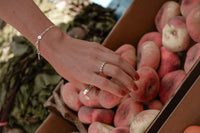Human Rights Watch, the human rights organisation has recently produced a report into the ethics of gold and diamonds used in the jewellery industry. Human Rights WatchPeople are aware of Blood Diamonds, and the industry is has made good progress in limiting the sale of these gems. However, the name 'blood diamond' and the efforts being made to tackle the problem, only relate to gems mined in a war zone and sold to fund insurgency. It doesn’t cover forced labour imposed by the government of a country, forcible displacement, or exploitation of natural resources and the cost of that on the local populations. The Human Rights Watch report castigates many big-name jewellery companies for their lack of awareness of the issues, and calls for transparency so that purchasers can see where their diamonds and gold really come from. Names like Boodles and Chopard are ranked very weak, and have taken few steps towards responsible sourcing of their materials. Others, like Rolex, declined to provide any information at all about their supply chain, and ethical stance. Particular concerns are being raised about child labour in the Democratic Republic of Congo, where there is an abundance of gold, copper, diamonds and cobalt. Many of the big name jewellers reply on the Responsible Jewellery Council, which is an umbrella organisation for over 1,000 jewellery and jewellery-supply companies. However, their standards don’t weed out companies that deny basic human rights. The Kimberley Process, brought in to remove Blood Diamonds from the supply chain, has a very narrow focus, and loopholes – it only applies to rough diamonds, and is open to corruption. The human rights group Global Witness has withdrawn its backing from the Kimberley Process, over these failings. Global Witness Human Rights Watch has drawn up an extensive list of recommendations for jewellery companies to ensure that their diamonds and gold are responsibly sourced, but in reality it’s impossible to call any mined diamond truly a responsible purchase. Any diamond, whether it is mined by forced labour in a dark corner of a warlord’s territory, or extracted by modern machinery in the Arctic wilderness of Canada, comes at a cost. There are those mined with a greater cost, and those with a lesser cost, for sure, but there is still a cost. The environment is never the same once a huge hole has been dug in it to extract diamonds, the people who used to live there, or who live downstream, will suffer consequences from the mining operations, the animals which used to live there can never return. Jericho mine in Canada, in snowHuman Rights Watch are running a campaign urging jewellery producers to raise their game on ethical sourcing, using #BehindTheBling but if you’re serious about choosing responsibly sourced gems and precious metals, check out our stones, and bespoke ordering service. The only truly ethical diamond is a man-made one. Identical in appearance, just as beautiful, just as precious, and everything you want a diamond to be, without the appalling ethical connotations.





